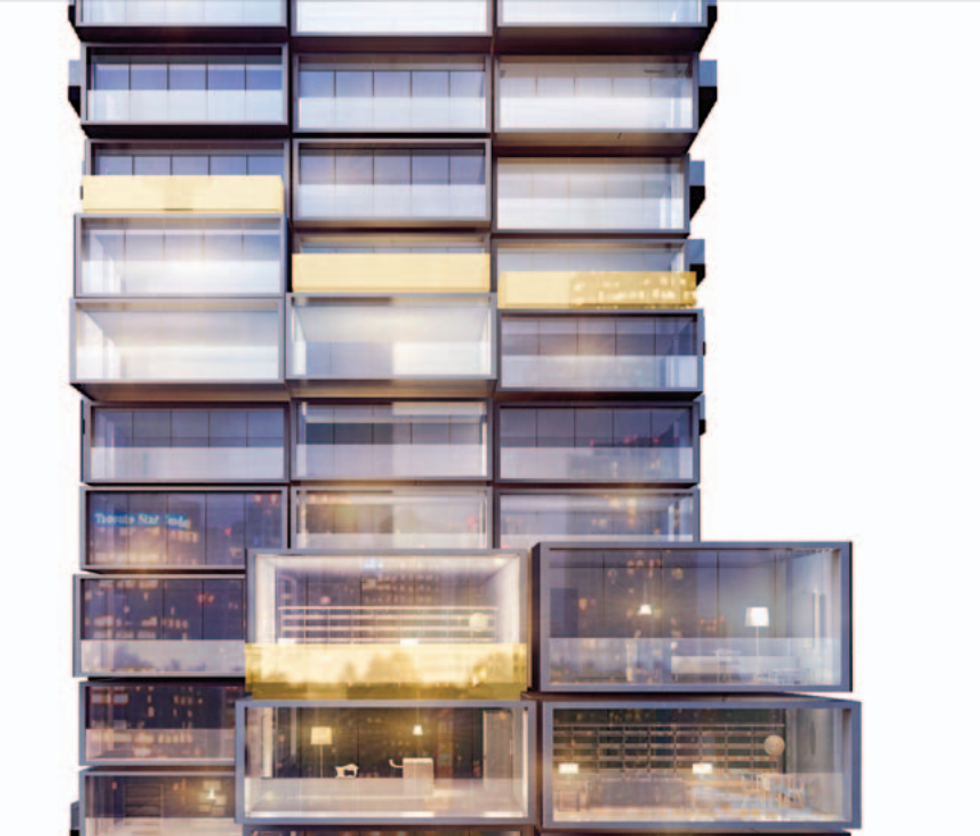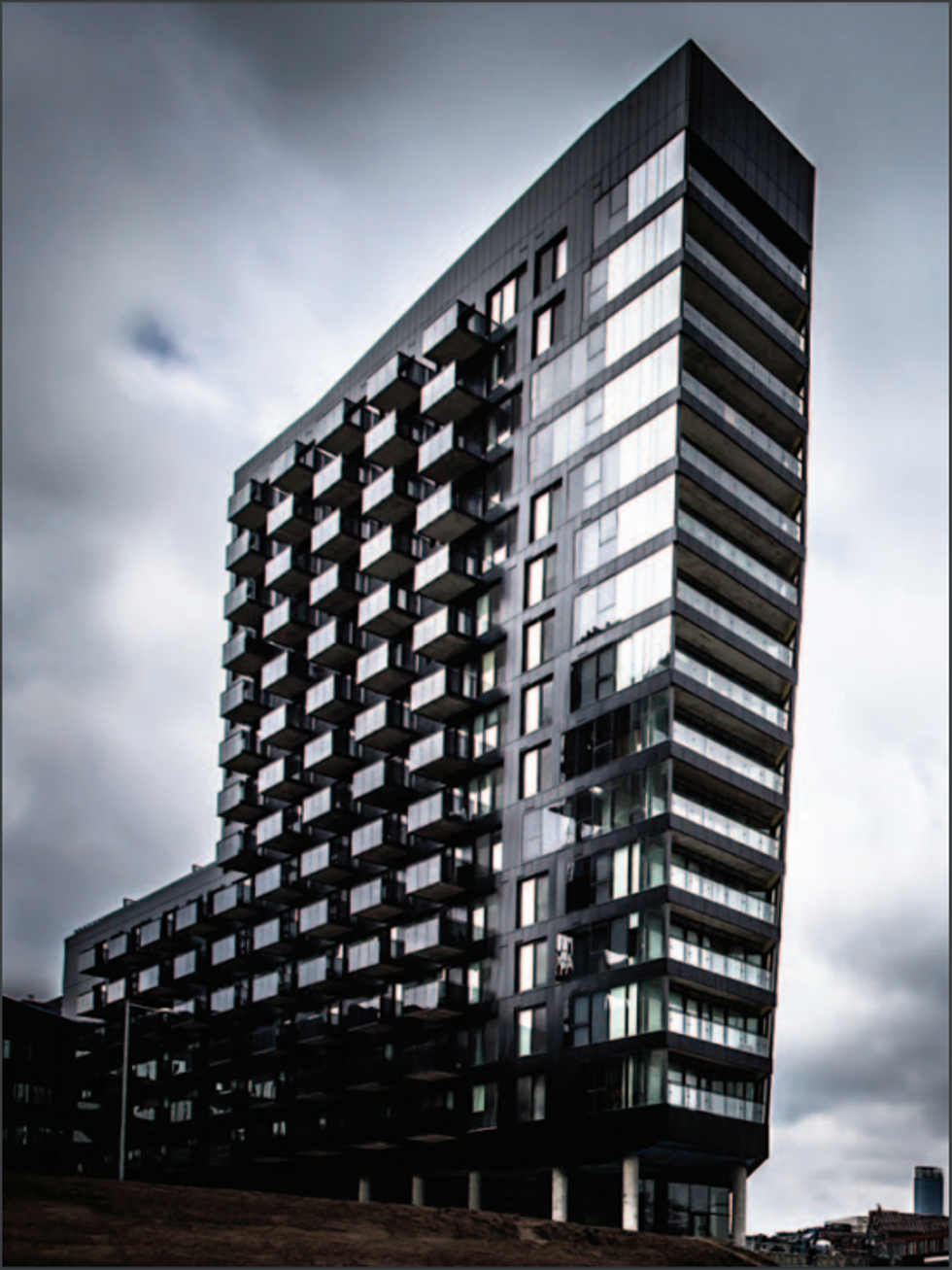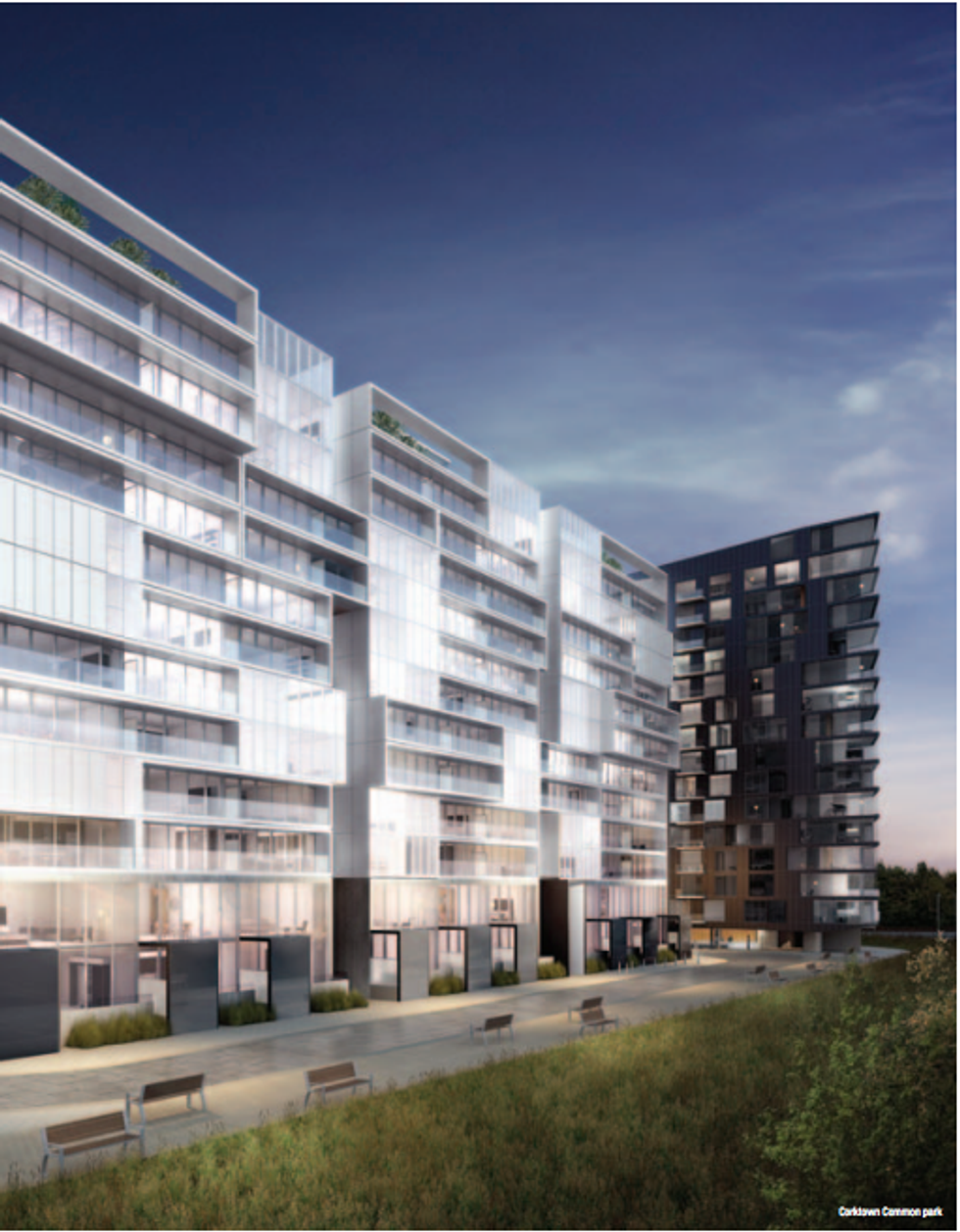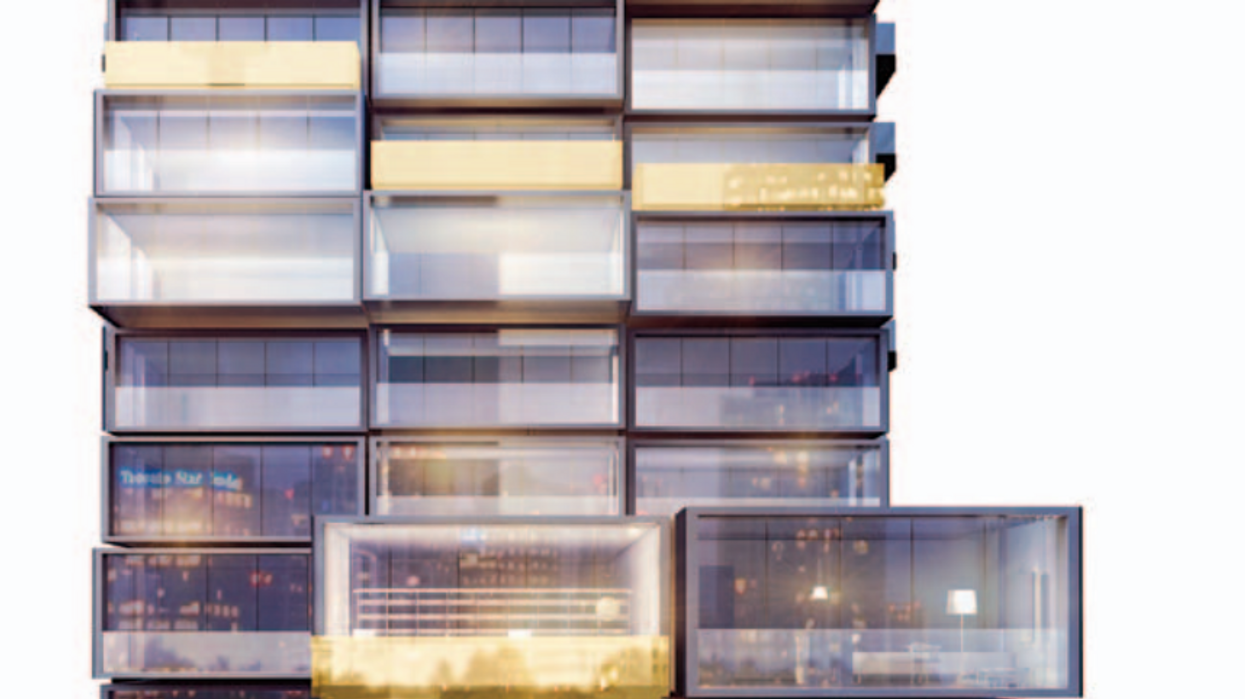
Just when it seemed the art of city-building had been lost forever, along comes the West Don Lands. Tucked away south of King just before it veers into Queen, here is Toronto's first great 21st-century neighbourhood.
Though far from finished, it's already clear the planners, developers and architects involved got the big moves right. No, not everything is perfect, but the area adds up to more than the sum of its parts. It achieves that elusive critical mass of mixed-use — residential, recreational, retail, commercial — necessary for a fully-functional, multi-dimensional, urban enclave.
Primarily mid-rise in scale, the West Don Lands is organized around a street grid that gives equal access to pedestrians and cyclists as well as cars. Indeed, it’s the site of Toronto's first woonerf, Trolley Lane. A Dutch term for a street designed to operate as a shared right-of-way that is relatively free of signage, lacks curbs and forces users to be aware of one another, regardless of their mode of transportation.
The main street of the new precinct — an extended Front St. East — is especially interesting. With sidewalks seemingly as wide as the four-lane roadway, it is a thoroughfare intended to move traffic, but not at the cost of compromising the neighbourhood. Compared to, say, Yonge between Sheppard and Finch, a six-lane urban highway that locals are now demanding be calmed and narrowed to four lanes, Front feels open and spacious, not hostile and dangerous.
As the evidence of city and suburbs makes only too clear, this balance is not easily achieved. The planners of the West Don Lands have not denied the car, but they have given equal access to other forms of mobility.
The only thing lacking here is public transit. Its absence has more to do with the City of Toronto and the TTC than Waterfront Toronto, the tripartite agency responsible for revitalizing the former industrial land. An LRT line on Queen's Quay East promised more than a decade ago has never materialized, and though it remains on the books, no one should hold their breath. In the meantime, the new 514 King streetcar route takes passengers to a loop just south of Front on Cherry St., where no condo is more than a few minutes' walk.

The West Don Lands' developer, Urban Capital, and its architects, Saucier + Perrotte of Montreal and Toronto's ZAS, have pulled out the stops and made design excellence the rule here not the exception.
Their slabs bear no resemblance to their predecessors from the 1960s and '70s. Instead, they have an extraordinary, post-apocalyptic aesthetic that looks like something out of a science fiction story. The exteriors of these buildings, some interrupted by protruding units, some extending farther than others, appear strangely unfinished. Lanes move through archway openings in structures to add an appealing sense of messiness to things. Indeed, this is not a project that avoids complexity, but which embraces it.
Then there's the whole issue of what happens in these buildings at ground level. These are the spaces occupied by shops, cafés, restaurants and the like. They form the basis of the street life we associate with the city's most desirable corners. It's unlikely Front will be a second Queen St, a College or a King, but the signs are hopeful. Cafés are showing up along with stores and even a TD branch, a sure sign civilization has arrived.
The West Don Lands — now renamed Canary District and River City — have yet to reveal their final form, but this focus on the street will pay dividends, as will the refusal to design the community around the car, which leads inevitably to the sort of sterilizing effect that has left many areas of Toronto and the surrounding suburbs empty and desolate.
Yet the pressure to prioritize the automobile remains strong in Toronto and beyond. Indeed, city council's decision to enlarge the east end of the Gardiner Expressway at the cost of more than $2 billion flies in the face of staff advice and the experience of cities around the world — many of which have already taken down similarly elevated expressways. For the West Don Lands, removing the Gardiner and replacing it with a ground-level boulevard would have enhanced the context (and the city) immeasurably.

The understanding of the importance of the public realm is another reason for the West Don Lands' success; the spaces of the new neighbourhood are filled with art as well as more mundane but equally significant features such as light standards, trees, benches and green spaces. The presence of the Cooper Koo YMCA on Cherry St. also adds depth to the community. It has helped transform what would otherwise be a place people go to live, into one they can fully inhabit.
There are disappointments; Harris Square, for example, provides plenty of seating but does little to enliven the environs. On the other hand, Corktown Common, designed by New York-based landscape architect Michael Van Valkenburgh, anchors the neighbourhood, protects it from flooding, gives residents a place to play and nature a way through.
And in its own way, the 18-acre park is a brilliant illustration of the sense of innovation that informs the West Don Lands. Though few visitors will be aware, the Common actually sits on top of an enormous berm that made the new neighbourhoods possible. The huge mound, which took three years to build, was required because the site is in the floodplain of the Don River.
The understanding that obstacles are also opportunities allowed Waterfront Toronto to realize the West Don Lands' vast potential. Though this seems obvious now, there were plenty of naysayers along the way. What they failed to grasp was the power of imagination to change the world, or in this case, the city in which we live.





















